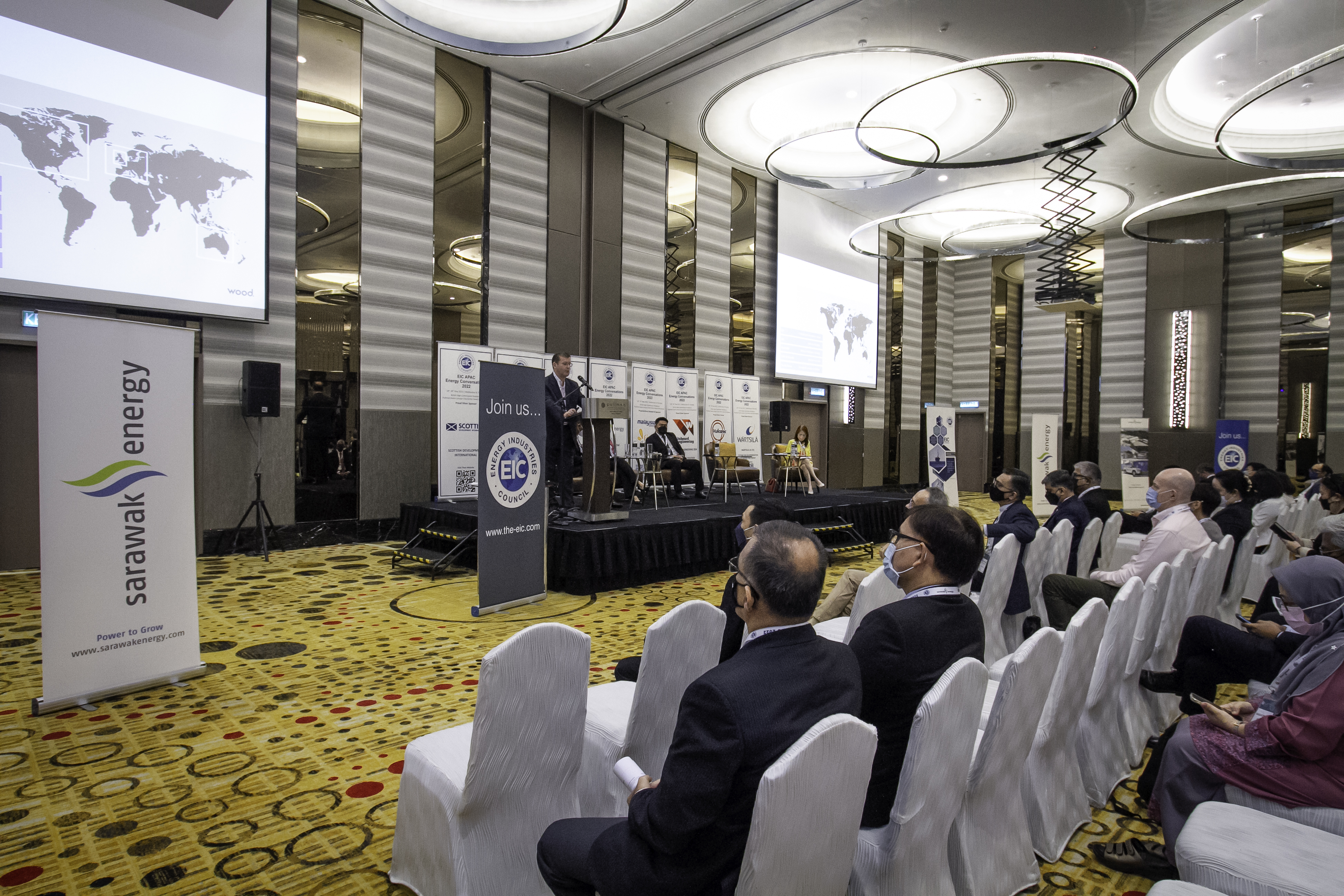Collaboration at the core of addressing climate change
As the world reopens up post-pandemic, our team have participated in conferences where energy industry leaders discussed the biggest challenges currently facing humanity – climate change and how to achieve net-zero.
Mike Moore, rhi’s Regional Director Asia Pacific, and Stephanie WanUllok, Project Controls Consultant, presented on Delivery on the Net-Zero challenge and discussed how Wood & rhi are working together to address the challenges our clients face with carbon intensity at both the EIC and Project Controls conferences. By combining Wood’s decarbonisation SCORE methodology and innovative proprietary solution for monitoring operational emissions, together with rhi’s Carbon Column estimating tool, we can assist clients through their energy transition.
What is your Decarbonisation SCORE?
The journey to decarbonisation is complex and knowing where to start can be difficult. It is important to apply a structured process to be able to map out how your goals will be achieved and ultimately realise them. To simplify this complex process, Wood’s experts created the Decarbonisation SCORE methodology which provides a roadmap to setting and delivering emissions reduction targets.
As part of a wider delivery model, decarbonisation SCORE can be applied to single or multiple assets, to a client’s full asset portfolio or across a specific geography or region using an assessment of opportunities to meet set targets. The process comprises the following key opportunities:
- Substitute - substitution of fuel or feedstocks consumed for renewable or less intensive sources. For example, switching electricity provision to a renewable source or considering use of renewable and bio feedstocks.
- Capture - employing carbon capture technologies, or emissions control technologies, to substantially reduce or eliminate harmful emissions to the environment.
- Offset - considering assets or product portfolios across a country or company-wide scale to achieve decarbonisation/clean air goals.
- Reduce – looking at holistic asset optimisation considering areas around energy efficiency, digitalisation and operations and maintenance best practice.
- Evaluate - whatever your decarbonisation journey, it’s important to apply a structured evaluation process to be able to map out your decarbonisation journey to meet goals and lead to a successful outcome.
Wood’s decarbonisation SCORE process has been deployed across a broad client base comprising public sector, infrastructure, and industry.
To supplement Wood’s decarbonisation SCORE methodology, their team can also deploy their operational emissions monitoring solution called ENVision. This provides visibility of carbon and other emissions to
ensure reduction targets are achieved. ENVision manages carbon and emissions data, performs regulatory
calculations and reporting, allowing KPI management, an auditable record of data and optimisation.
By working closely with Wood, rhi has developed a further estimating software called Carbon Column. This tool provides a focused approach which showcases technical insights and solutions recognising the Taskforce for Climate-related Financial Disclosures (TCFD), GHG Protocol and ISO standards through a Tiered Reporting Process with 4 internationally recognised tiers.
Tier 1 – Default factors based upon knowledge of project parameters such as fuels, materials, services and product types.
Tier 2 – Application of benchmark factors for equipment type, characterisation of fuels, and estimate of consumption. Materials, services and product types and estimates of quantities and transport type and distances.
Tier 3 – Application of defined factors for specific equipment and details of final fuel types and rates of consumption. Specific material quantities and regional or source factors and transport type and distances. Feedstocks and product quantities, mode of transport and distance to markets.
Tier 4 – Measurement – Fuel Quality & Quantity, Power Consumption, Leak Detection. The application of Wood’s ENVision tool can be used to measure, monitor and manage direct emissions throughout the operation
Although the system is at a relatively early stage, it has been utilised in various sectors to date.
The time to act is now.
The time for talk is over. We need to act now to address these challenges and create a more sustainable world for future generations.
Are you interested in finding out how rhi, together with Wood, can support your business or project as you work towards net-zero goals? Reach out for more information.

